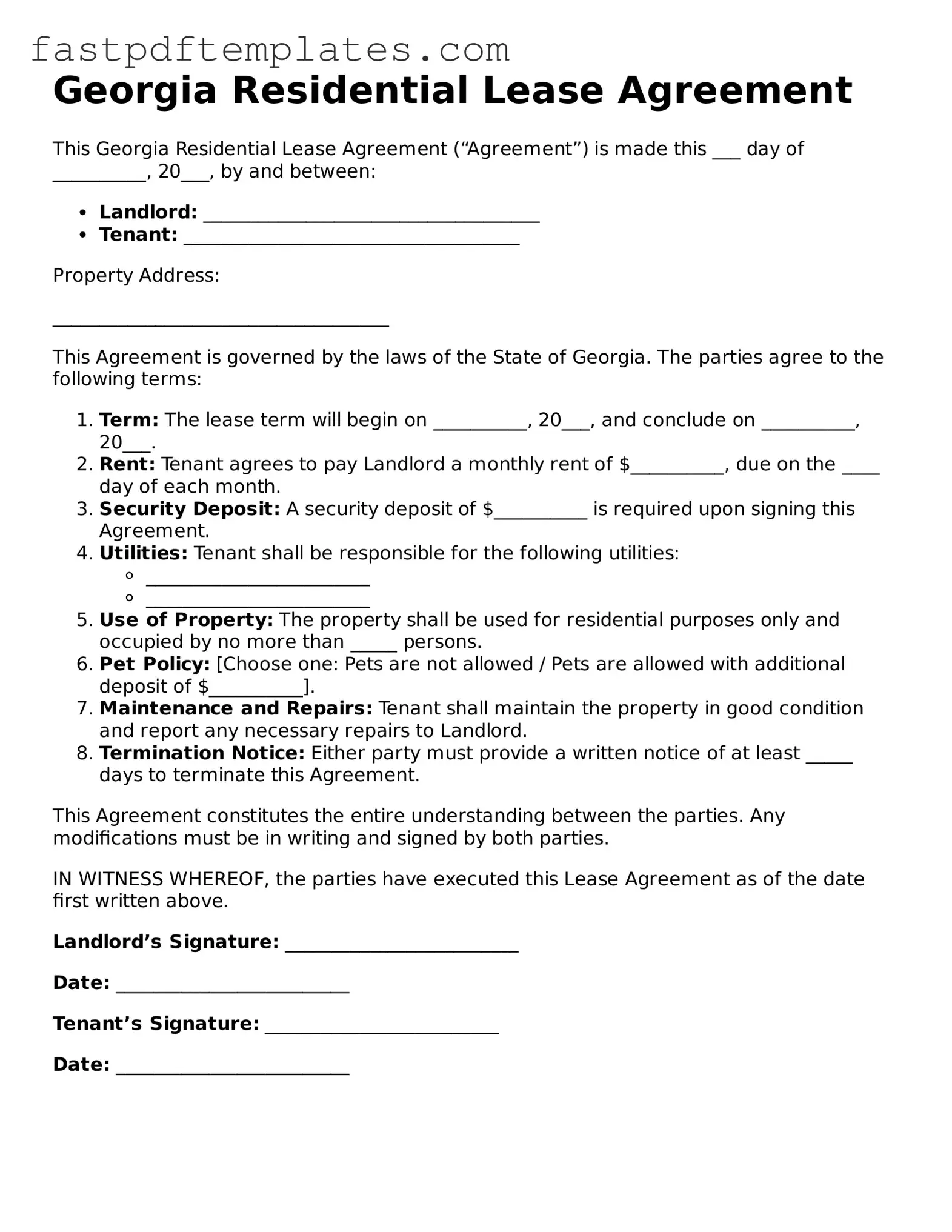The Georgia Residential Lease Agreement is similar to a standard residential lease agreement used in many states across the U.S. Like the Georgia version, these agreements outline the terms and conditions under which a tenant may occupy a rental property. They typically cover essential aspects such as the duration of the lease, rental payment details, and responsibilities for maintenance and repairs. The primary goal of both documents is to protect the rights of both landlords and tenants, ensuring that expectations are clear and legally enforceable.
Another document that shares similarities with the Georgia Residential Lease Agreement is the Commercial Lease Agreement. While the latter is designed for business properties, both types of leases serve the same fundamental purpose: to establish a legal relationship between the property owner and the occupant. Both agreements detail the obligations of each party, such as payment terms and property maintenance, but the commercial lease often includes additional clauses related to business operations, zoning laws, and liability insurance requirements.
The Sublease Agreement is also akin to the Georgia Residential Lease Agreement. A sublease occurs when a tenant rents out their leased property to another individual, known as the subtenant. Both documents outline the rights and responsibilities of the parties involved. However, a sublease agreement must also address the original tenant's obligations to the landlord, ensuring that the primary lease terms are upheld even when the property is occupied by a subtenant.
The Month-to-Month Rental Agreement is another document that shares characteristics with the Georgia Residential Lease Agreement. While the latter typically involves a fixed term, the month-to-month agreement allows for greater flexibility, enabling tenants to occupy a rental property on a monthly basis without a long-term commitment. Both agreements still include essential terms such as rent payment and property maintenance, but the month-to-month lease often has shorter notice requirements for termination, making it a more adaptable option for both parties.
The Roommate Agreement can also be compared to the Georgia Residential Lease Agreement. This document is particularly useful when multiple individuals share a rental property. While the residential lease outlines the relationship between the landlord and the tenants, the roommate agreement focuses on the internal dynamics among the tenants. It typically addresses issues such as rent division, shared responsibilities, and conflict resolution, thereby complementing the residential lease by fostering harmony among roommates.
Another related document is the Rental Application. While not a lease itself, the rental application serves as a preliminary step before entering into a lease agreement. It gathers essential information about potential tenants, such as employment history and creditworthiness. This document helps landlords assess whether a prospective tenant meets the criteria outlined in the residential lease agreement, ensuring that the selection process is fair and informed.
Lastly, the Lease Addendum is similar to the Georgia Residential Lease Agreement in that it serves to modify or add specific terms to an existing lease. For instance, if a landlord wishes to implement new rules regarding pet ownership or maintenance responsibilities, they may create a lease addendum to formalize these changes. Both the lease and the addendum must be agreed upon by both parties, ensuring that all terms are legally binding and understood by everyone involved.
